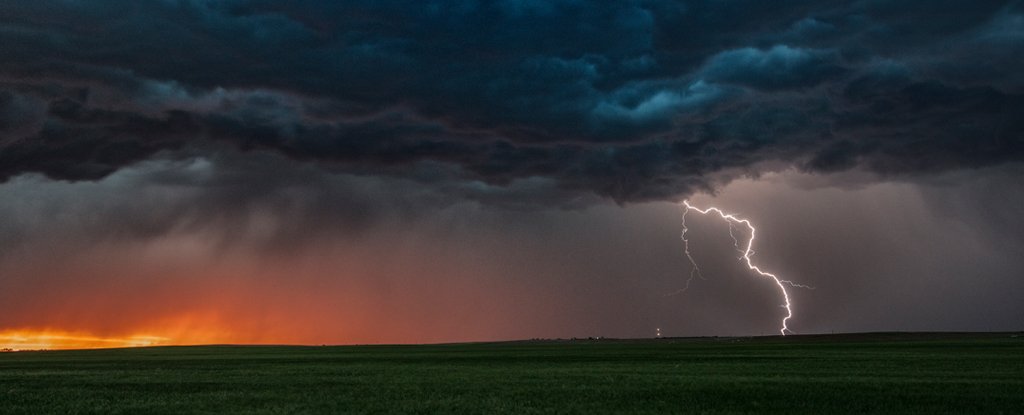Products You May Like
While grumbling skies and spectacular displays of air-splitting light can be a thrilling experience to witness, thunderstorms can also do an awful lot of damage.
From igniting massive wildfires to causing flash flooding, damaging hail, and even tornadoes ,this wild weather can destroy homes and businesses and take lives.
Thunderstorms that roil across the Southern Great Plains of the US are amongst the strongest of such storms on Earth. Known as mesoscale convective systems, these storm complexes provide up to 90 percent of the region’s total annual rainfall.
Their intensity and frequency have been increasing, yet our best climate models still struggle to predict just how and when they’ll arise.
To help refine climate models for the Southern Great Plains, paleoclimatologist Christopher Maupin from Texas A&M University and colleagues used oxygen and hydrogen isotopes to track the ferocity of past storms.
Water molecules based on elements wielding an additional neutron or two tend to require a little more energy to vaporize, and release more energy as they condense. This leaves a clear signature in the ratios of isotopes separated by rainfall under various conditions.
By comparing the results of analyses taken today with historic ratios of hydrogen and oxygen isotopes found trapped by stalactites in Texan caves, the researchers developed an accurate picture of weather events in the past.
“These thunderstorms are so big that even if most of the rain occurs in Oklahoma, rain in Texas will still carry isotopic signature of these huge storms,” said Maupin.
“You’re fingerprinting these systems despite where they occur, and they don’t have to be super localized to be recognized. Big storms cause depleted isotopic signatures.”
Using another set of isotopes, this time measuring those of uranium and thorium, the team dated the stalactites and stalagmites to around the last Ice Age, 30-50 thousand years ago.
Measuring the shifts in oxygen and hydrogen isotopes down their lengths allowed the researchers to see the storms cycled from weakly to strongly organized, roughly every thousand years. The more strongly organized the complex of storms becomes, the more intense and damaging they are.
They discovered these changes in thunderstorm intensities coincided with well-known, abrupt shifts in global climate, known as Dansgaard–Oeschger events.
The researchers also found these intensity increases coincide with a reduction in rain in southwestern US and greater atmospheric upwelling in the Santa Barbara Basin area.
They believe the observed pattern suggests an increased frequency or intensity of the giant global atmospheric waves that drive the weather, called Rossby waves, may be providing the extra lift needed to fuel these greater storms.
“Modern anthropogenic climate forcing has increasingly favored an amplification of these synoptic factors,” the team wrote in their paper.
“This work will help predict trends of storms in the future,” explained geoscientist Courtney Schumacher.
“If we can run a climate model for the past which is consistent with cave records, and run that same model moving forward, we can trust its findings more if it matched the cave records versus if they didn’t. Out of two models, if one really matches the cave isotopes then you can trust that one in understanding storm distribution in the future.”
These findings can have potential practical applications too, says geologist and civil engineer Audrey Housson, who contributed to the research as an undergraduate: Understanding the correlation between climate change and weather can help us better plan for important infrastructure in the future, including water resources.
This research was published in Nature Geoscience.
